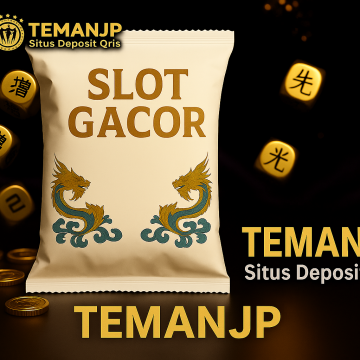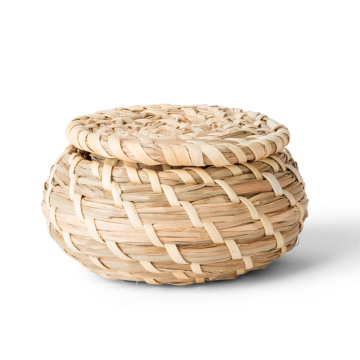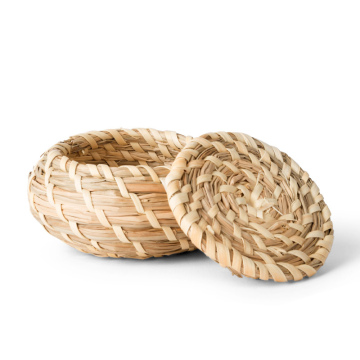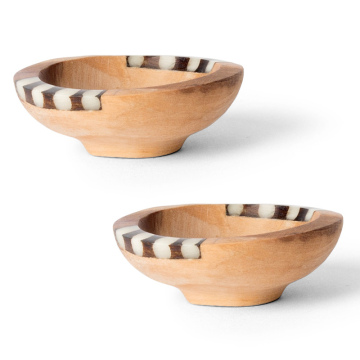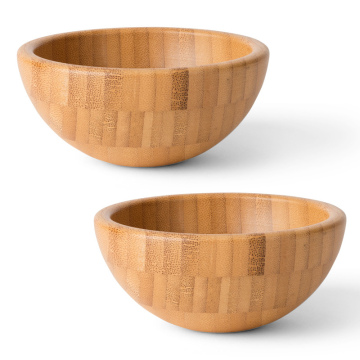Onigiri Adventure: A Delicious Journey Through Japan
Introduction to Onigiri: Japan's Iconic Rice Balls
Onigiri, often referred to as rice balls, is a beloved staple in Japanese cuisine that has captivated both locals and visitors alike with its simplicity and versatility. Traditionally made from cooked white rice, onigiri is molded into various shapes, most recognizably the triangular form, and is often filled with an assortment of ingredients. These can range from pickled plum (umeboshi) to grilled salmon, showcasing the myriad of flavors that Japanese gastronomy has to offer.
The history of onigiri dates back over a thousand years, with early references appearing in texts from the Heian period (794-1185). Originally designed for practical purposes, these rice balls were convenient for traveling warriors and laborers, providing a portable meal that could sustain them throughout the day. As such, onigiri holds a significant place in Japan's rich culinary heritage, embodying the ingenuity and adaptability of Japanese cooking.
Culturally, onigiri transcends mere sustenance; it represents communal activity, often being prepared as a shared meal among families or friends. This cultural significance has helped maintain its popularity throughout the years, even as the preparation of onigiri has adapted to modern culinary trends. Today, one can find a variety of onigiri styles, ranging from the classic hand-formed rice balls sold in konbini (convenience stores) to gourmet variations created by high-end chefs utilizing organic ingredients and innovative seasonings. Furthermore, advancements in food packaging have allowed onigiri to be enjoyed in diverse settings, making it easily accessible to those seeking an authentic taste of Japan.
In this blog post, we will embark on a delicious journey to explore the various flavors, fillings, and styles of onigiri. This culinary adventure will highlight both traditional and contemporary interpretations of this iconic dish, celebrating its evolution while honoring its origins.
Regional Variations of Onigiri Across Japan
Onigiri, commonly known as rice balls, serves as a quintessential representation of Japanese gastronomic culture, with its regional variations offering a deeper insight into the diverse culinary practices of the country. Each area in Japan showcases unique ingredients, flavors, and preparation techniques that reflect local traditions and environmental factors, making onigiri not just a dish but also a cultural artifact.
Starting in Hokkaido, the northernmost region of Japan, onigiri is often filled with fresh seafood, such as salmon or crab, inspired by the region's rich maritime culture. The addition of ingredients like salmon roe and local vegetables also contributes to the distinct flavors that characterize Hokkaido's cuisine. The use of locally sourced ingredients signifies not only the freshness but also the cultural importance placed on regional produce in onigiri preparations.
In contrast, Kyoto presents a more refined approach to onigiri, exemplifying the city’s emphasis on seasonal ingredients and artistry. Often, onigiri from Kyoto may include pickled vegetables, such as umeboshi (pickled plum) or tsukudani (soy sauce-based preserved foods), highlighting a sophisticated balance of flavors. The aesthetic presentation of these rice balls draws on the city's historical appreciation for aesthetics, making each onigiri a small work of art.
Further south, Okinawa introduces its own distinctively flavorful twist on onigiri. Known for its tropical ingredients, onigiri from this region may feature fillings such as spicy tuna, shredded pork, or even tropical fruits like mango. The use of unique seasonings, such as Okinawan salt, adds to the distinctive flavor profile, showcasing how local agricultural practices influence onigiri variations across the islands. This diversity of onigiri not only tantalizes the taste buds but also reflects the rich tapestry of regional cultures throughout Japan.
The Making of Onigiri: Techniques and Ingredients
Onigiri, a traditional Japanese rice ball, is not only a staple in Japanese cuisine but also a symbol of comfort and convenience. The art of making onigiri revolves around a few fundamental techniques and carefully chosen ingredients. To begin your onigiri journey, it is essential to select the right type of rice. Short-grain Japanese rice, known for its stickiness, is preferred as it allows the grains to clump together, providing the necessary texture for shaping. A typical choice is 'Sushi rice' or 'Calrose,' both of which are readily available.
Once you have selected your rice, the next step involves the meticulous preparation process. Rinse the rice under cold water until the water runs clear, removing excess starch that may cause gummy rice. Soak it for about 30 minutes before cooking for optimal texture. The rice should then be cooked in a rice cooker or saucepan, following a standard water-to-rice ratio of approximately 1.2:1. After cooking, let the rice sit covered for about 10 minutes to finish steaming.
The heart of onigiri lies in the fillings and seasonings used. Between classic options like umeboshi (pickled plum) and salted salmon, or perhaps a twist with grilled chicken teriyaki, the possibilities are boundless. Incorporating seaweed sheets, known as nori, for wrapping adds an additional layer of flavor and texture. When shaping the rice, use wet hands to prevent sticking and pack the rice firmly into triangular or oval shapes, ensuring the onigiri maintains its form.
As you experiment with onigiri creation, be mindful of common pitfalls such as using too much water during rice cooking or over-compacting the rice. Creative variations, like adding sesame seeds or incorporating vegetables within the filling, can also bring new dimensions to this classic dish. By balancing tradition with innovation, every home cook can master the making of onigiri, crafting their own delicious variations while honoring its rich cultural heritage.
Onigiri in Modern Japanese Cuisine and Beyond
Onigiri, traditionally enjoyed as a simple yet flavorful staple of Japanese cuisine, has evolved significantly within contemporary culinary landscapes. Modern-day chefs and home cooks alike are embracing this versatile rice ball, breathing new life into its preparation and presentation. The classic form of onigiri, typically made with seasoned rice and wrapped in nori, is now often reimagined with an array of ingredients and flavor profiles that reflect global culinary influences. Ingredients such as quinoa, brown rice, and various fillings—from avocado and smoked salmon to pickled vegetables—have emerged, blending traditional techniques with modern dietary preferences.
Many cafés and restaurants both in Japan and abroad have incorporated onigiri into their menus, elevating the dish to gourmet status. In urban areas, onigiri bars have gained popularity, offering a wide range of creative fillings and combinations that cater to vegetarian, vegan, and health-conscious diners. Innovative interpretations include onigiri sushi rolls or fusion variations, such as Korean-inspired kimchi onigiri or Mediterranean-infused versions that utilize olives and feta cheese. These adaptations highlight onigiri's potential as an adaptable dish, suitable for various palates and cultural contexts.
Moreover, the growing popularity of onigiri outside of Japan cannot be overlooked. With the increasing interest in Japanese cuisine and food culture, onigiri has made its way into international markets, finding a place in grocery stores, food trucks, and restaurants around the world. This widespread appeal is partly due to its convenient, portable nature, making it a favored choice for busy individuals seeking nutritious and satisfying meals. As audiences continue to seek authentic culinary experiences, onigiri stands as a testament to the enduring legacy of Japanese cuisine while also showcasing its adaptability in a globalized culinary arena.
Situs Gacor Pulsa Tri 5K Tanpa Potongan Terbaru 2025
Temukan situs gacor deposit pulsa Tri 5K tanpa potongan terbaru di tahun 2025 dan nikmati beragam permainan online dengan aman. Penting untuk memilih situs yang terpercaya agar pengalaman bermain Anda menyenangkan. Dapatkan kesempatan untuk meraih berbagai bonus dan promosi menarik serta pastikan semua transaksi diproses tanpa biaya tambahan. Bergabunglah dan nikmati permainan seru yang ditawarkan oleh situs gacor pulsa di tahun ini.
Situs Deposit Pulsa Tri 5K Tanpa Potongan Paling Gacor
Temukan kemudahan transaksi dengan situs deposit pulsa Tri 5k tanpa potongan. Nikmati proses deposit yang cepat dan efisien tanpa ada potongan, serta optimalkan setiap nilai deposit Anda. Dengan langkah-langkah yang sederhana, Anda bisa melakukan transaksi dengan mudah dan merasa lebih menguntungkan. Bergabunglah sekarang dan gunakan pulsa Anda secepatnya tanpa menunggu lama!
Cara Mudah Main Situs PG Soft Via Pulsa Tri dan Indosat 5000 Tanpa Potongan
Situs PG Soft kini semakin populer di kalangan penggemar permainan online. Dengan berbagai pilihan permainan yang menarik dan bonus yang menggiurkan, semakin banyak orang yang tertarik untuk mencoba keberuntungan mereka. Salah satu cara yang praktis untuk melakukan deposit adalah melalui pulsa, khususnya dengan provider Tri dan Indosat.
Keuntungan Menggunakan Pulsa untuk Deposit
Dengan menggunakan deposit pulsa Tri dan deposit pulsa Indosat, pemain bisa melakukan deposit mulai dari nominal 5000 tanpa potongan. Ini adalah pilihan yang sangat menguntungkan, terutama bagi mereka yang tidak memiliki rekening bank atau kartu kredit. Proses deposit pun sangat cepat dan mudah, sehingga Anda bisa langsung bermain tanpa harus menunggu lama.
Langkah-Langkah Melakukan Deposit
Untuk melakukan deposit di situs PG Soft via pulsa, langkahnya sangat sederhana. Pertama, pastikan Anda memiliki pulsa yang cukup. Kemudian, akses situs PG Soft dan lakukan pendaftaran jika Anda belum memiliki akun. Pilih opsi deposit via pulsa, masukkan nomor telepon, dan jumlah deposit yang diinginkan. Ikuti instruksi yang diberikan dan tunggu konfirmasi. Setelah selesai, saldo Anda akan segera terisi dan siap digunakan untuk bermain.


